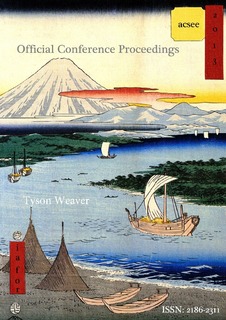| dc.contributor.author | Weaver, Tyson John | |
| dc.contributor.author | Steen, Markus | |
| dc.date.accessioned | 2017-08-30T07:43:16Z | |
| dc.date.available | 2017-08-30T07:43:16Z | |
| dc.date.created | 2013-11-13T14:07:31Z | |
| dc.date.issued | 2013 | |
| dc.identifier.citation | ACSEE Conference Proceedings. 2013, 711-723. | nb_NO |
| dc.identifier.issn | 2186-2311 | |
| dc.identifier.uri | http://hdl.handle.net/11250/2452307 | |
| dc.description.abstract | Given the urgency of realizing a transition to more sustainable energy systems, it is crucial to gain more knowledge about the role of incumbents and the dynamics of regimes. Over the past decade many energy system incumbents have found themselves responding to exogenous challenges in their core domestic markets and many have strategically reoriented themselves towards new ‘green' opportunities. By investigating diversification strategies of traditional energy companies and their associated suppliers in terms of both products and markets, this paper contributes to an enhanced understanding of agency and dynamics of regimes and the role of spatiality in transitions. Our analytical framework is multi-disciplinary in drawing on insights from transition studies, evolutionary-relational economic geography, and strategic management. Utilizing survey data from 250 strategically sampled firms, our findings suggest that skill relatedness triumphs spatial proximity in diversification strategies, but that this also depends on the nature of the incumbent's product. However, recently two key industry developments have taken place that changes the trajectory of these firms being firmly rooted in sustainability transitions. Whilst the discovery of new fields on the Norwegian Continental Shelf has revived the O&G industry, the implementation of a ‘Green certificate scheme' has created new opportunities in the domestic electricity sector. We conclude that our case incumbents continually demonstrate reactive strategies, thus undermining proactive sustainability transitions. Until global market opportunities in new renewable energy technologies can demonstrate sustained market stability and growth as traditional industry we posit that such incumbents will remain on beaten tracks. | nb_NO |
| dc.language.iso | eng | nb_NO |
| dc.publisher | IAFOR | nb_NO |
| dc.rights | Navngivelse-Ikkekommersiell 4.0 Internasjonal | * |
| dc.rights.uri | http://creativecommons.org/licenses/by-nc/4.0/deed.no | * |
| dc.title | Firm level motivations and barriers for initiating sustainability transitions in the Norwegian energy system | nb_NO |
| dc.type | Journal article | nb_NO |
| dc.type | Peer reviewed | nb_NO |
| dc.description.version | publishedVersion | nb_NO |
| dc.source.pagenumber | 711-723 | nb_NO |
| dc.source.journal | ACSEE Conference Proceedings | nb_NO |
| dc.identifier.cristin | 1065271 | |
| dc.relation.project | Norges forskningsråd: 209697 | nb_NO |
| dc.description.localcode | © The International Academic Forum 2013. All IAFOR Conference Proceedings are freely available online under a Creative Commons 4.0 Attribution Non Commercial International licence. | nb_NO |
| cristin.unitcode | 194,67,50,0 | |
| cristin.unitcode | 194,67,10,0 | |
| cristin.unitname | Institutt for industriell økonomi og teknologiledelse | |
| cristin.unitname | Geografisk institutt | |
| cristin.ispublished | true | |
| cristin.fulltext | original | |
| cristin.qualitycode | 0 | |

